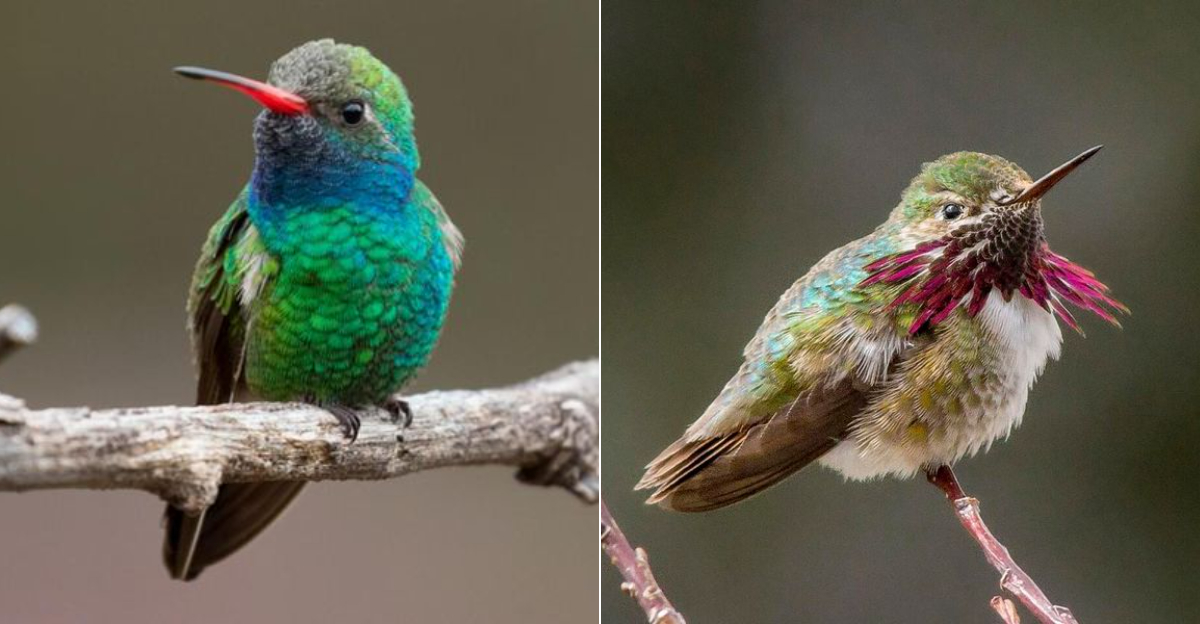East Tennessee’s mountains and flower-filled valleys make it a paradise for hummingbirds.
I’ve spent countless summer mornings on my porch, coffee in hand, watching these tiny aerial acrobats zip around my feeders.
Whether you’re a seasoned birder or just enjoy these miniature marvels, knowing which species visit our region can transform a simple sighting into an exciting discovery.
Ruby-Throated Hummingbird: Our Resident Jewel
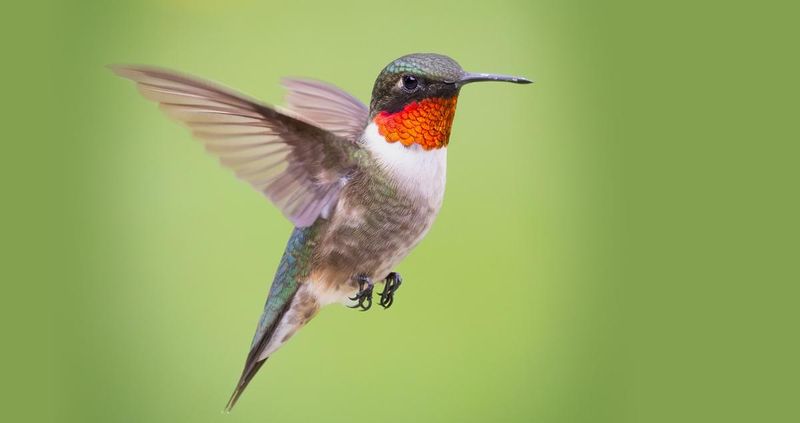
These are our most common visitors in East Tennessee, arriving in April and staying until early October.
Males sport the distinctive ruby throat patch, while females have white throats and are slightly larger.
Both have emerald-green backs and white-gray undersides that shimmer in the sunlight.
Listen for their soft chirps and the distinctive hum of their wings beating 50 times per second. They prefer tubular flowers like trumpet vine and bee balm, but will happily visit feeders filled with a simple sugar solution.
Rufous Hummingbird: The Feisty Winter Visitor
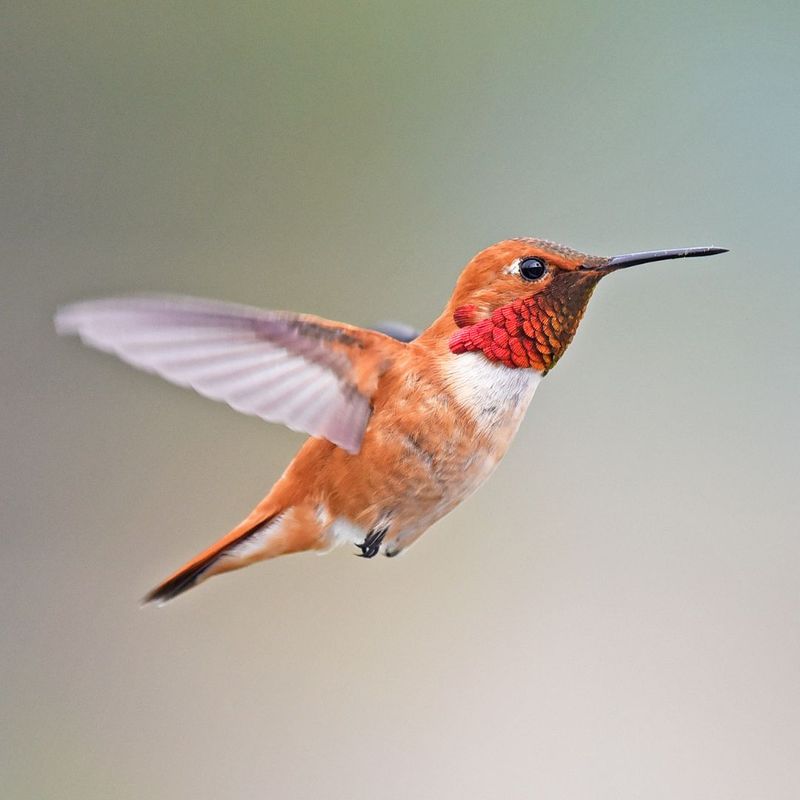
Tough as nails and twice as scrappy!
Rufous Hummingbirds are the unexpected winter guests that sometimes brave our Tennessee cold. Males flaunt coppery-orange plumage that glows like a penny in the sunlight, with a brilliant orange-red throat that flashes when they turn their head.
Females and juveniles show green backs with rusty patches on their flanks and tail.
Look for them between November and February, especially during mild winters. They’re rare but increasing in East Tennessee.
Black-Chinned Hummingbird: The Purple-Throated Wanderer
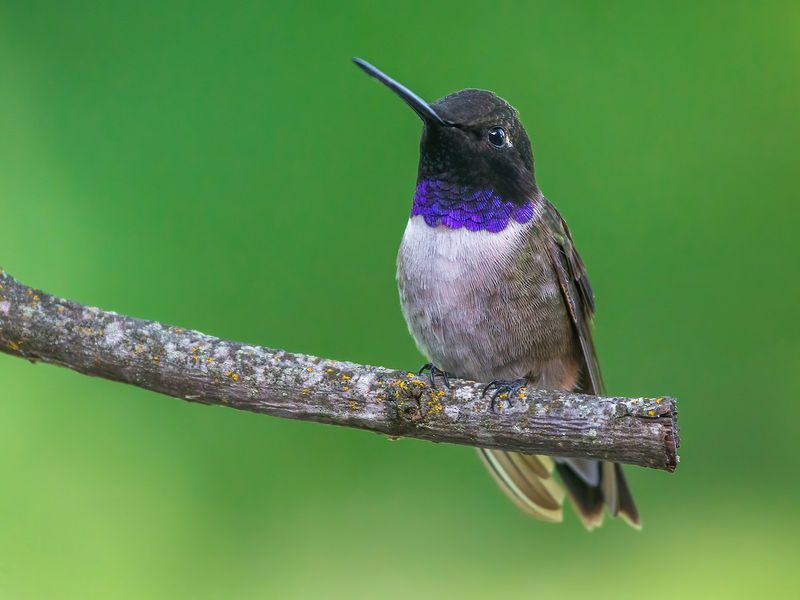
Black-chinned Hummingbirds are the quiet celebrities of our region – not common, but worth celebrating when they appear! Males feature a velvety black throat with a thin strip of iridescent purple that only catches the light at certain angles.
Females have a pale throat and grayish-green back, making them tricky to distinguish from female Ruby-throats.
My neighbor spotted one last summer and called me over – we watched for an hour as it methodically visited every bloom in her garden.
Allen’s Hummingbird: The Rare Orange Flash
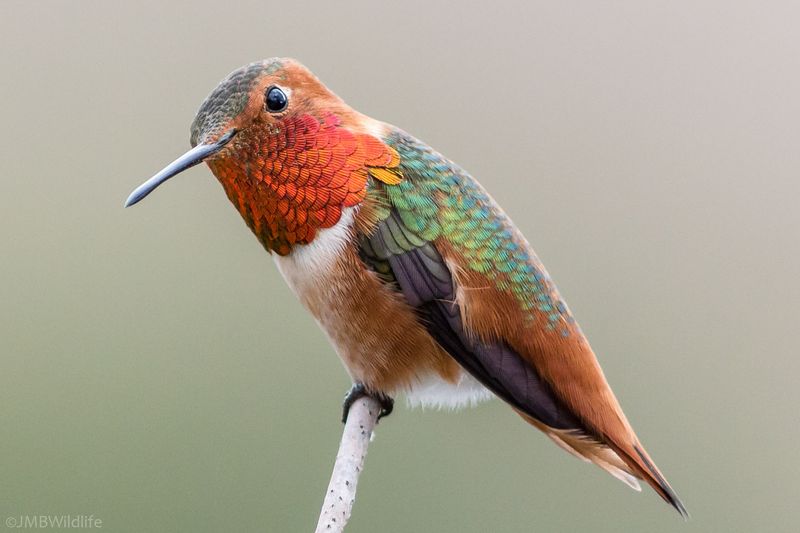
Allen’s Hummingbirds are the unicorns of East Tennessee.
Males display brilliant orange-red throats and coppery-orange flanks that extend onto their tails, with green backs that glimmer in sunlight.
These western natives occasionally stray eastward during migration.
They’re incredibly agile fliers, capable of flying upside down and even backwards. Look for their distinctive green-backed, rusty-sided appearance and listen for their high-pitched, metallic chatter!
Calliope Hummingbird: The Tiny Mountain Gem
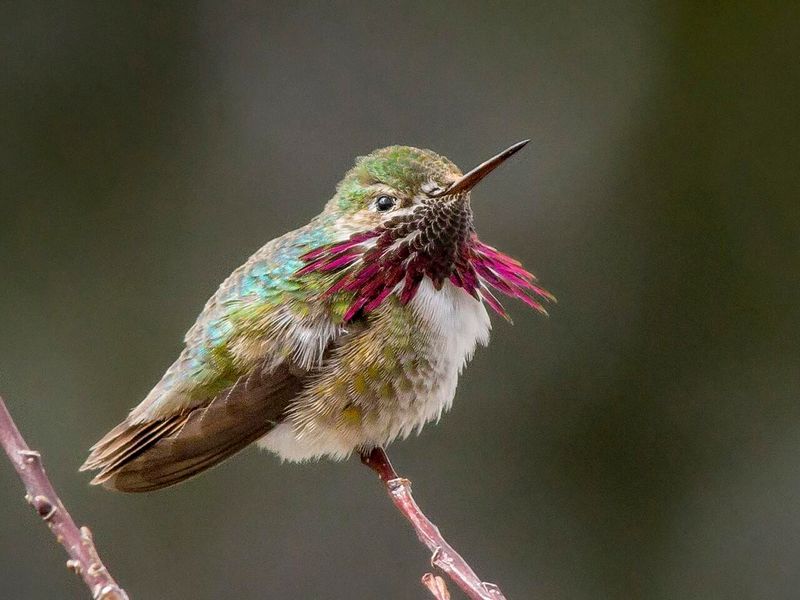
Smallest of all North American hummingbirds, the Calliope is a rare treat in East Tennessee!
Despite their diminutive size (barely 3 inches long), these birds migrate thousands of miles each year. A local birding friend photographed one at Roan Mountain during an unusually cold October.
Their calls are high-pitched and squeaky, almost insect-like. In our region, look for them during fall migration, especially in mountainous areas where they may pause to refuel before continuing their journey.
Anna’s Hummingbird: The Rose-Crowned Rarity
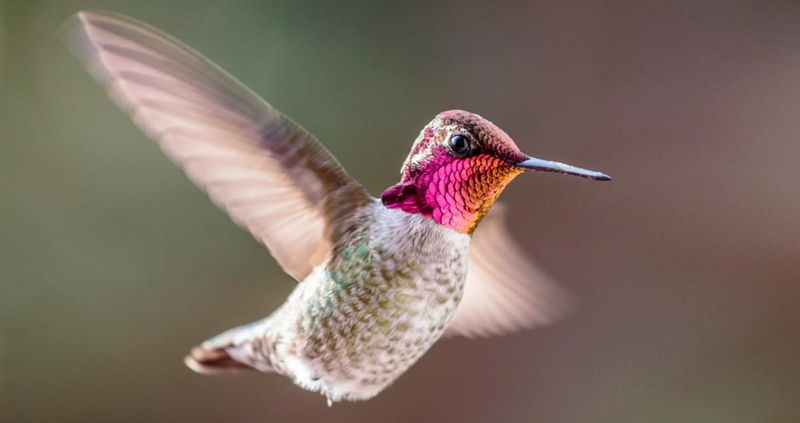
These western natives occasionally wander eastward, causing quite a stir when they do!
Larger and chunkier than our Ruby-throats, they’re also more vocal, with distinctive scratchy songs that sound like squeaky toys.
Females show a small central throat patch of pink and gray-green backs. If you’re lucky enough to spot one in Tennessee, it will likely be during winter months when these hardy birds sometimes stray from their typical range.
Broad-Tailed Hummingbird: The Mountain Migrant
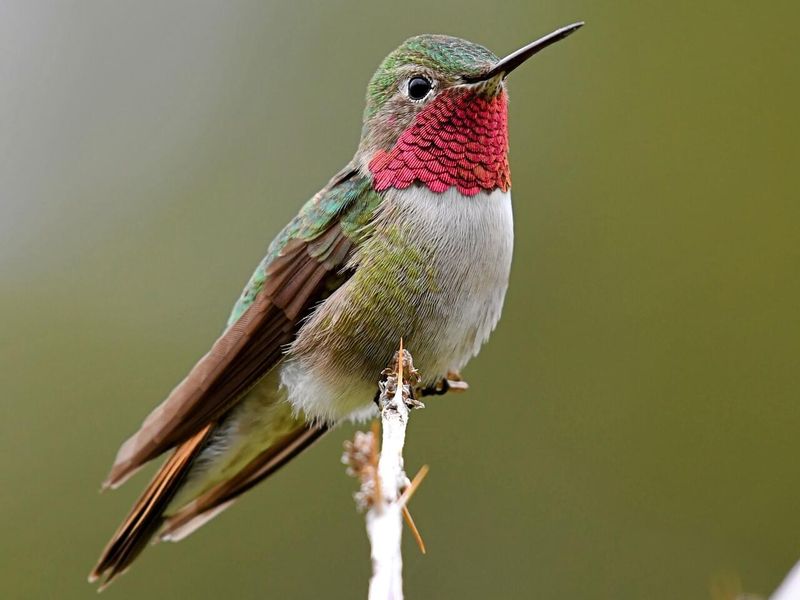
Broad-tailed Hummingbirds announce themselves with a mechanical trilling sound produced by their wings – unlike anything you’ll hear from our resident Ruby-throats. Males flash rose-magenta throats that appear almost strawberry-red in certain light.
Females show speckled throats and cinnamon-washed flanks.
These Rocky Mountain residents occasionally wander eastward during migration, making them exciting finds in Tennessee.
Their slightly larger size and broader wings help distinguish them from Ruby-throats.
Broad-Billed Hummingbird: The Turquoise Wonder
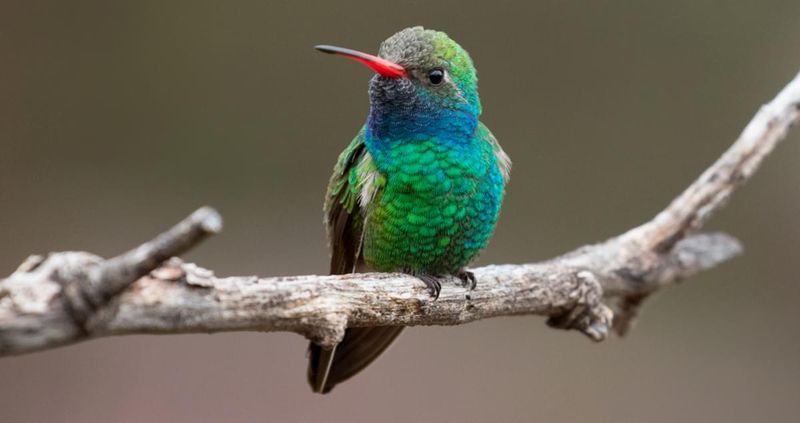
Picture this: a hummingbird so brilliantly colored it looks like flying jewelry!
Broad-billed Hummingbirds are Mexican natives that occasionally stray northward, bringing their spectacular colors with them. Males display stunning sapphire-blue throats and bright red bills with black tips.
The first documented Tennessee sighting occurred at a feeder near Chattanooga during an unusually warm November several years ago. These birds prefer desert habitats, making their appearance in our humid state truly remarkable.
Females show gray-green backs and white eye stripes. Their broad, reddish bills are distinctive even at a distance.
Mexican Violetear: The Emerald Vagrant

Sometimes lightning strikes twice! That’s how I felt when a Mexican Violetear appeared in my garden after years of hummingbird watching.
These stunning tropical wanderers sport brilliant emerald-green plumage with violet-blue patches extending from their eyes like fancy earrings.
Larger than our native hummingbirds, Mexican Violetears make quite an impression when they appear. They produce repetitive chip notes that sound nothing like our local species. Though extremely rare in Tennessee, climate change has pushed these tropical birds farther north in recent years.
Spotting Success: Essential Hummingbird Watching Tips
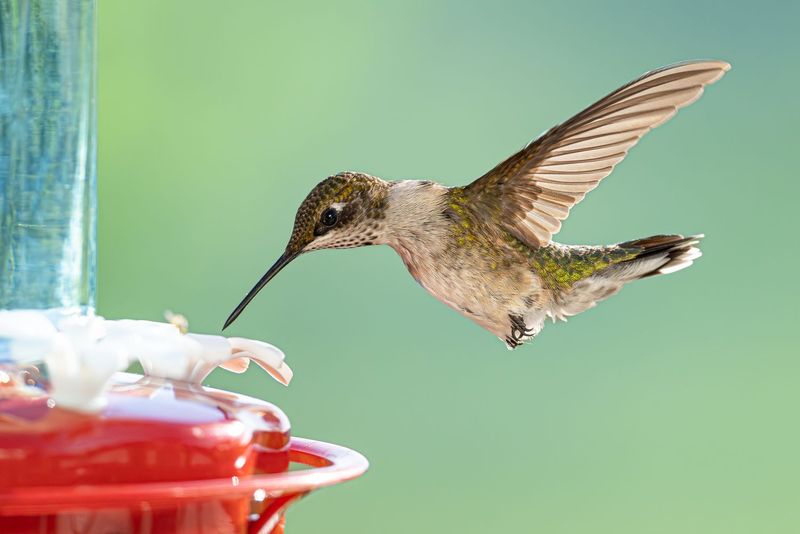
Patience rewards the persistent!
My best hummingbird sightings have come after sitting quietly for at least 15 minutes near feeders or flowering plants. Position yourself where sunlight will illuminate their iridescent feathers – early morning and late afternoon provide magical lighting.
Keep feeders clean and filled with a solution of one part white sugar to four parts water (no food coloring needed).
Plant native flowers like cardinal flower, bee balm, and trumpet creeper to attract more species.
For serious identification, invest in 8×42 binoculars that focus at close range. Record unusual sightings with photos if possible, noting the date, time, and weather conditions.
Join local birding groups to share sightings and learn from experienced hummingbird enthusiasts.
